Newsletter: Meet the law firms helping fossil fuel companies heat the planet

This is the Aug. 19, 2021, edition of Boiling Point, a weekly newsletter about climate change and the environment in California and the American West. Sign up here to get it in your inbox.
Two of the local residents hired by Method Campaign Services said the job was advertised as an “environmental fellowship.” One said she was led to believe she’d be “standing up for sustainability.”
They didn’t know they were being paid by a firm working for the natural gas industry. They didn’t know that when they told public officials at the ports of Los Angeles and Long Beach that “near-zero-emission” trucks were the best way to clean up the air in their largely Latino neighborhoods, that they were part of a gas industry campaign.
“I took a whole ethical step back,” said Sholeh Bousheri, who was hired by Method and only learned later about the gas industry’s role. “I was like, ‘Wait, what’s going on?’ Is this something I want to support with you? Is it moral?”
Read more in my latest story, written and reported with investigative journalist Miranda Green in partnership with Floodlight and the Guardian. The piece is also available in Spanish at La Opinión. It offers yet another example of how natural gas companies are pushing back against climate activists and policymakers who argue that the planet-warming fuel needs to go.
The company at the heart of the story, Clean Energy Fuels Corp., has come up in my reporting before. I wrote last year that they had joined Southern California Gas Co. in suing the California Energy Commission, arguing the agency is failing to promote natural gas as required by state law. Clean Energy Fuels and SoCalGas are also leading members of the California Natural Gas Vehicle Coalition, which is suing the state’s Air Resources Board over a regulation supporting zero-emission trucks.
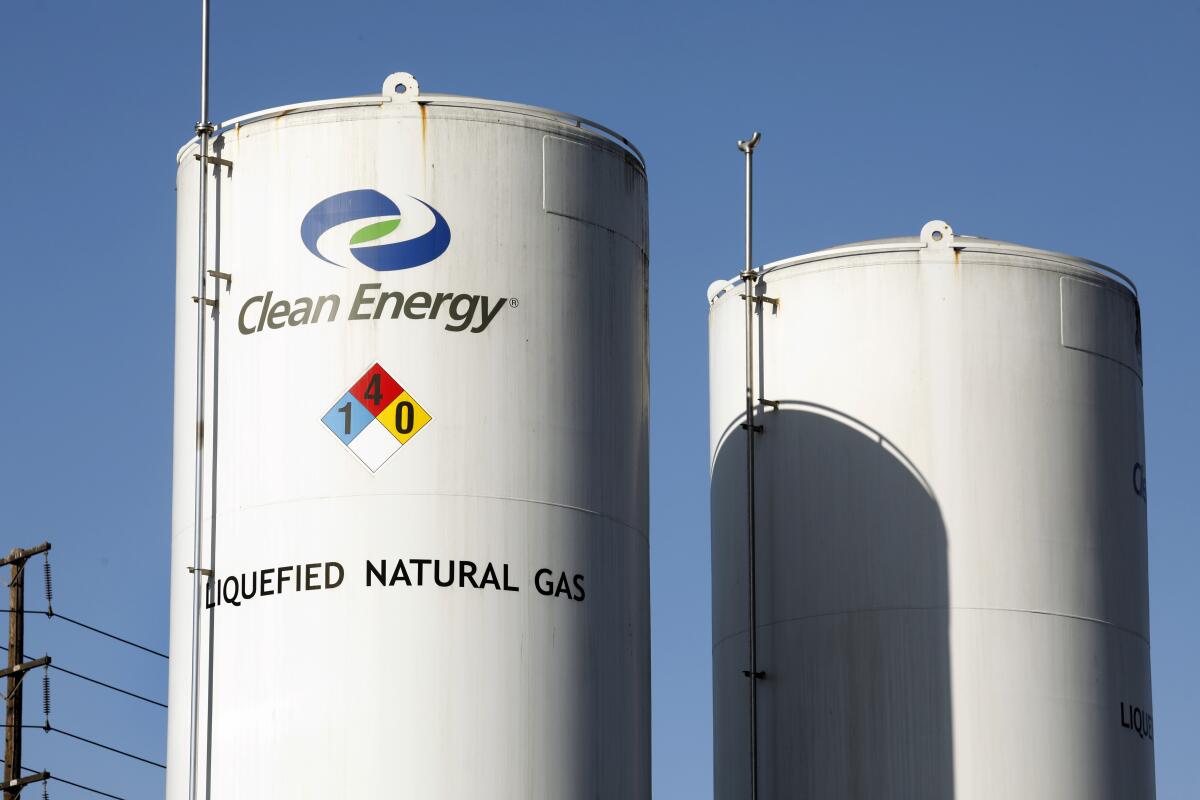
Usually when I write about lawsuits, I don’t pay much attention to the lawyers. But a new report released today by Law Students for Climate Accountability is making me reevaluate.
The report is the second iteration of a climate change “scorecard” assigning letter grades to the country’s 100 most prestigious law firms, as ranked by Vault Law. The law students behind the report examined which clients the so-called Vault 100 firms are representing in climate-related court cases, who they’re lobbying for and whose transactions they’re facilitating.
The students gave each firm a letter grade from “A” to “F.” The more work on behalf of fossil fuel companies, the worse the grade. Taking on renewable energy producers as clients could improve a law firm’s score.
The results: Thirty-six of the top 100 law firms received failing grades. Thirty-four squeaked through with a “D,” meaning more than two-thirds of the firms couldn’t even manage a “C.” Just three firms received “A” grades, and none earned an “A+.”
The students counted more than 350 instances of Vault 100 firms representing fossil fuel companies and other clients worsening global warming, in court cases from 2016 through 2020, based on their analysis of a database maintained by Columbia Law School. They tallied $1.36 trillion in fossil fuel transactions facilitated by attorneys at those firms, based on another database.
The students are promoting the idea that Big Law is an extremely profitable industry that should be held accountable for its choice of clients.
It’s a provocative premise, given that our U.S. legal system is founded on the principle that everyone deserves a lawyer, no matter what crime they may have committed or what harm they might have done. But for a growing number of law students, it’s an idea whose time has come as wildfires rage out of control, heat waves claim hundreds of lives and the time for action dwindles.
“These are well-resourced firms. They’re attracting top talent,” said Michaela Anang, a law student at UC Davis and lead researcher on the report. “We are thinking about how we can be part of the conversation about accountability.”
Attorneys aren’t alone: Climate advocates have begun targeting not only fossil fuel companies, but other industries that support those companies. I wrote earlier this year, for instance, about the campaign to pressure PR and advertising firms to stop working with coal, oil and gas interests. Amazon, Google and Microsoft have faced criticism for building tools to help energy firms extract more fossil fuel, with Google agreeing to stop. Twitter has allowed oil industry ads while blocking ads from climate groups.
Prestigious law firms undoubtedly add to their considerable wealth when they take on fossil fuel giants as clients. The question is whether they share responsibility for the enormous climate damage and air pollution these companies cause.
Law Students for Climate Accountability’s report singles out a few firms as especially egregious offenders.
It notes that Akin Gump performed more federal lobbying for fossil fuel companies than 91 other Vault 100 firms combined, raking in an estimated $6.78 million from 2016 through 2020. The firm didn’t respond to my request for comment. (Akin Gump, by the way, is representing the California Natural Gas Vehicle Coalition in its lawsuit against the Air Resources Board. Another firm that received an “F” grade, Sullivan & Cromwell, is representing SoCalGas in its suit against the California Energy Commission.)
Allen & Overy led the way on fossil fuel industry transactions, facilitating an estimated $125 billion in deals over the five-year period. In an emailed statement, a spokesperson told me the firm does “more renewables work than any other law firm in the world by most key measures,” is a “leading innovator on green bonds” and has “advised on hundreds of infrastructure projects across the world aimed at reducing carbon emissions, increasing efficient energy use, and otherwise driving sustainability.”
Then there’s Paul, Weiss. Law students at Harvard and Yale protested the firm last year, frustrated with its defense of Exxon Mobil in climate lawsuits brought by local governments, sparking a mini-movement that spread to other universities and resulted in hundreds of law students pledging not to work for Paul, Weiss until it drops Exxon as a client. Law Students for Climate Accountability ranks the firm as the Vault 100’s top litigator on behalf of fossil fuel companies, with 30 cases in its portfolio.
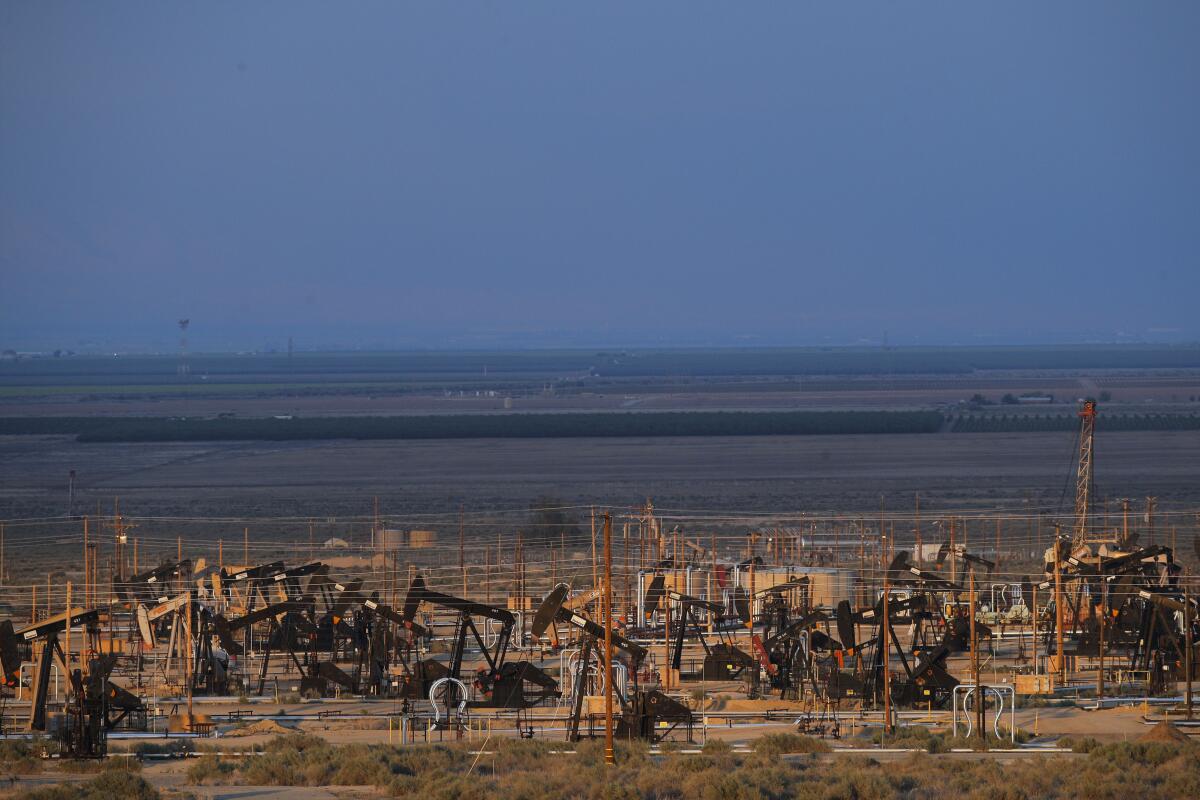
Paul, Weiss didn’t respond to my request for comment. But the law firms named in last year’s scorecard offered several defenses at the time. They cited internal efforts to reduce their own energy consumption, their representation of renewable energy clients and their pro bono work for environmental causes. Perhaps most intriguingly, they suggested that only by engaging with the fossil fuel industry can they advise those companies on strategies for shifting to a climate-friendly business model.
“Who else but attorneys are so aptly placed to advise fossil fuel clients as to what’s coming, and how to transition?” asked Gayatri Joshi, executive director of the Law Firm Sustainability Network.
Joshi works with dozens of law firms to reduce their environmental footprints, including some in the Vault 100. Her group has its own assessment tool focused on what firms are doing in areas such as energy efficiency, water conservation, limiting travel and supporting sustainability through volunteer work. It doesn’t judge firms based on their clients, but Joshi says that’s a topic veteran attorneys are talking about — especially as law students and young lawyers seek out socially responsible workplaces.
“What makes sense? Do you drop a client? Do you transition a client into different ways of doing things, preparing them for what’s to come within the marketplace?” Joshi asked. “These conversations are happening.”
Law Students for Climate Accountability’s scorecard has some shortcomings. For one, it only covers federal lobbying. There are almost certainly relevant lawsuits and transactions not included in the databases the students analyzed. And while they made an effort to incorporate environmental justice in their grades, they acknowledged they have more work to do on that front.
Even with those deficiencies, the group hopes to help aspiring attorneys choose an employer that doesn’t support the fossil fuel industry, if that’s important to them, and put pressure on law firms not to work for coal, oil and gas companies.
Thus far, the group doesn’t appear to have moved the needle very much. Just nine law firms (none in the Vault 100) have signed its climate pledge, which includes a promise not to take on new fossil fuel clients, and to drop existing clients by 2025.
Anang said she understands that law firms won’t turn on a dime and start changing their ways immediately. That perspective is informed in part by her upbringing. She grew up in West Texas, an oil and gas mecca, and she hopes to see a “just transition” that supports both low-income people of color burdened by pollution and people who work in the fossil fuel industry.
“Part of my community has been fighting against refineries and the oil and gas industry polluting their homes, polluting their air, for years. But it’s also where a lot of people have their livelihoods,” she said. “Moving from that place of love and justice — how do we do [a just transition], how do we think through it — is part of what I’ve tasked myself with.”
Yes, everyone deserves a lawyer. But at the same time, everyone deserves clean air, clean water and a habitable planet. The ability to spend an afternoon at home and not worry about dying of heat stroke. The peace of mind to go outside and take a walk without panicking about inhaling dangerous wildfire smoke that can penetrate your lungs and make you more vulnerable to COVID-19.
“Law firms too frequently consider themselves neutral actors,” the climate scorecard says. “This view is inaccurate.”
What do you think? Send me an email to let me know.
For now, here’s what else is happening around the West:
TOP STORIES
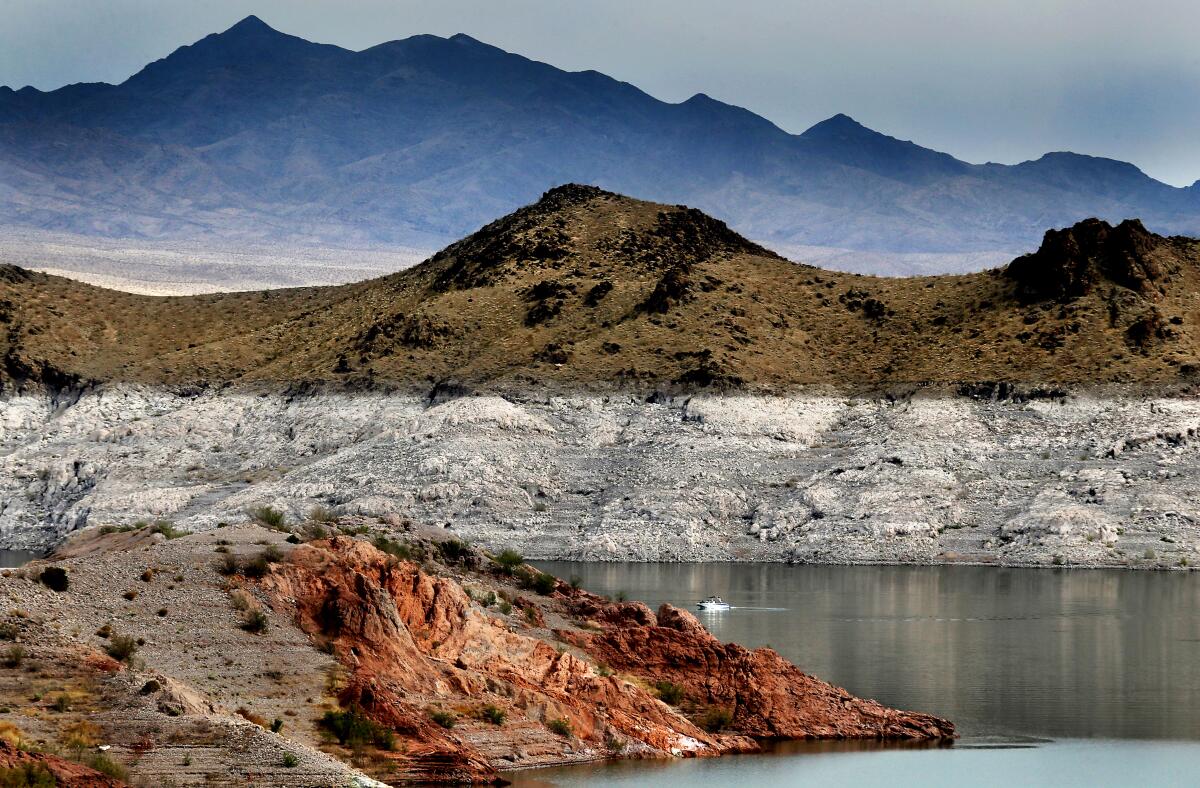
Earth just experienced its hottest month on record. The AP’s Seth Borenstein reports that July 2021 was especially scorching in the Western U.S. Need evidence? Just look to Oregon and Washington, where another absurd heat wave saw Portland get so hot that an ice cream shop shut down because it worried customers might faint in line, per the New York Times’ Mike Baker and Sergio Olmos. If stories like these are depressing, don’t forget: You are not powerless. My colleague Amina Khan wrote about how you can help fight climate change, from insulating your home to voting in elections. And yes, elections have consequences; see Irvine, which just became the third California city to set a goal of carbon neutrality, with a 2030 timeline, Ben Brazil reports for The Times.
Federal officials declared the first-ever water shortage on the Colorado River. This has been expected for months, and it’s not as dire as it sounds, at least for California; the immediate consequence is that Arizona farmers will see much of their supply cut off, as the Arizona Republic’s Ian James and Zayna Syed report. But the long-term consequences of a drier Colorado are serious for everybody. Just one day after the shortage declaration, Southern California’s largest water provider issued a supply alert urging conservation, Hayley Smith and Julia Wick report for The Times. Learning to live with less water will require collaboration across the West — but after rafting through the Grand Canyon, Inside Climate News reporter Judy Fahys isn’t sure we’re up to the task.
In the eastern Coachella Valley community of Thermal, Latino farmhands and service workers struggle not to overheat in dilapidated mobile homes while the ultra-wealthy speed racecars in luxury. ProPublica reporters Elizabeth Weil and Mauricio Rodríguez Pons describe Thermal as a “cartoonishly horrible” example of how the climate crisis magnifies inequality, making life more painful for the poor and people of color while the privileged “remain comparatively safe, protected by money and power.”
CALIFORNIA CENTRAL
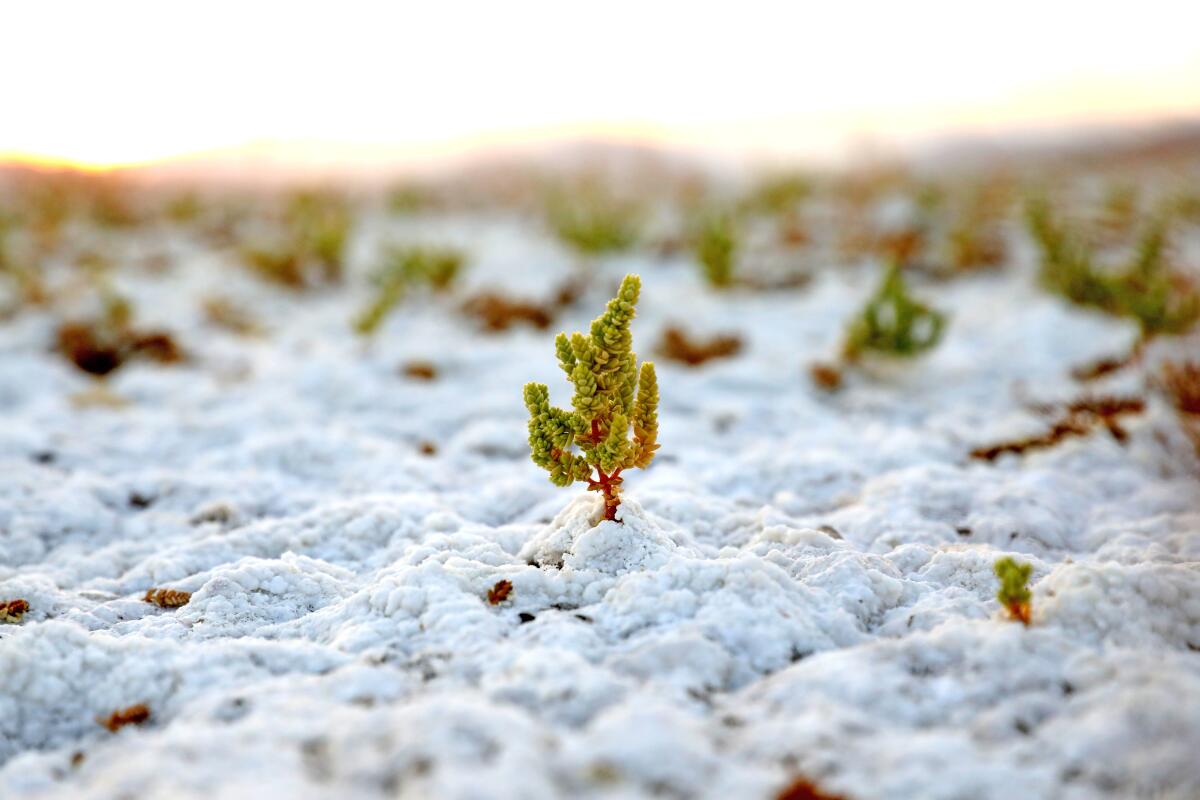
“Niterworts may seem inconsequential to some people. But they’re resilient, tough little guys clinging to existence in one of the harshest environments on Earth.” My colleague Louis Sahagún journeyed to the salt-white playas and remote rock tubs of the Amargosa River Basin to tell the story of biologists hurrying to save plants and animals from the ravages of climate change through “Noah’s Ark”-type projects. It’s a beautiful, sad, sweeping tale of efforts to save salmon, frogs, butterflies and more.
“In this paradise where the redwoods meet the sea, mornings are still foggy and damp... But homes are losing water.” The Times’ Hailey Branson-Potts and Jay L. Clendenin journeyed to Mendocino, where inn owners are asking tourists not to take baths and restaurants desperately await water deliveries so they don’t have to shut down. Such is life in a town with no municipal water system, where everyone relies on groundwater wells — some hand-dug in the 1800s — at a time when there’s not much rain.
The wildfire situation is not getting any better. The Dixie fire is larger than 600,000 acres and still growing, even as Pacific Gas & Electric — which may have caused the blaze — cuts power to some customers to prevent more ignitions. (Good advice here from Jessica Roy on how to prepare for this kind of blackout.) My colleague Mel Melcon described what it was like photographing Greenville after the Dixie fire tore through, writing, “the smoke that hung in the air made it impossible to immediately see how decimated the town was.” Southern California Edison, meanwhile, won’t be prosecuted over the Woolsey fire after investigators found “insufficient evidence” to prove the utility company’s role beyond a reasonable doubt, Alejandra Reyes-Velarde writes.
POLITICAL CLIMATE
California Democrats are urging the Pentagon to keep sharing satellite images that firefighting agencies rely on. Here’s the story by Jennifer Haberkorn, whose reporting (alongside L.A. Times colleague Anna M. Phillips) jettisoned this topic into the national spotlight. Anna also reports that federal firefighters are now getting the pay increase to $15 an hour that President Biden promised, although it’s temporary, at least until Congress approves a permanent fix included in the bipartisan infrastructure bill. And lest we forget that fire isn’t just a Golden State problem, see this powerful story by the Washington Post’s Joshua Partlow, about a small mountain town in eastern Washington that’s suffered some of the country’s worst air quality in recent months.
As of Wednesday, California’s oil and gas supervisor has rejected 85 fracking permits this year, compared to 12 approved. In an interesting twist, Uduak-Joe Ntuk has cited his discretionary authority rather than technical standards in rejecting some of those permits, John Cox reports for the Bakersfield Californian. While it’s hard to know if these things are related, Gov. Gavin Newsom has a new senior climate advisor, 31-year-old Oakland resident Lauren Sanchez, who previously worked in the Biden administration. KQED’s Ezra David Romero talked with her about phasing out extraction while supporting oil and gas workers.
Protecting spaces considered sacred by Indigenous peoples is about a lot more than preserving artifacts, and federal law often doesn’t do a good job of it — on public lands, but especially on private lands. That’s the key takeaway from this story by the Arizona Republic’s Debra Utacia Krol, who writes that it’s not just extractive industries but also solar plants that can irreparably damage sacred landscapes. In a related story, President Biden nominated Charles Sams to lead the National Park Service; he hails from the Pacific Northwest and would be the agency’s first Indigenous director, Kurt Repanshek writes for National Parks Traveler.
THE ENERGY TRANSITION
The Biden administration will appeal a court ruling blocking the administration’s pause on federal oil and gas leasing. In the meantime, the Interior Department says it will resume lease sales on public lands, although it’s unclear when that will happen and what it will look like, Heather Richards and Emma Dumain report for E&E News. Federal officials face especially tough choices in the areas surrounding New Mexico’s Chaco Canyon, home to Native American artifacts that some tribes say must be protected even as other Indigenous people hope to lease out their lands to oil and gas companies, Richards reports for E&E News.
California will require rooftop solar and battery storage at new residential high-rises and many commercial buildings. The rules add to an existing regulation mandating solar power on new single-family homes, Ivan Penn reports for the New York Times. The Energy Commission also approved rules that will encourage developers to build all-electric homes, although it declined to ban gas heating and cooking in new construction despite the urging of climate advocates, a debate I wrote about late last year.
What is the Biden administration’s position on natural gas? It’s hard to say. Gina McCarthy, the president’s top domestic climate advisor, was asked about this while touring a facility operated by San Diego Gas & Electric, which is a subsidiary of Sempra Energy, the topic of last week’s Boiling Point. She responded that Biden has an “all of the above” energy strategy and that “we are not picking and choosing winners,” per the San Diego Union-Tribune’s Rob Nikolewski. Meanwhile, it’s not yet clear who Biden will nominate to the Federal Energy Regulatory Commission. The Nevada Independent’s Riley Snyder reports that Warren Buffett-owned NV Energy got Gov. Steve Sisolak to support Tom Dalzell, a labor lawyer whom critics say is too favorable to natural gas.
ONE MORE THING
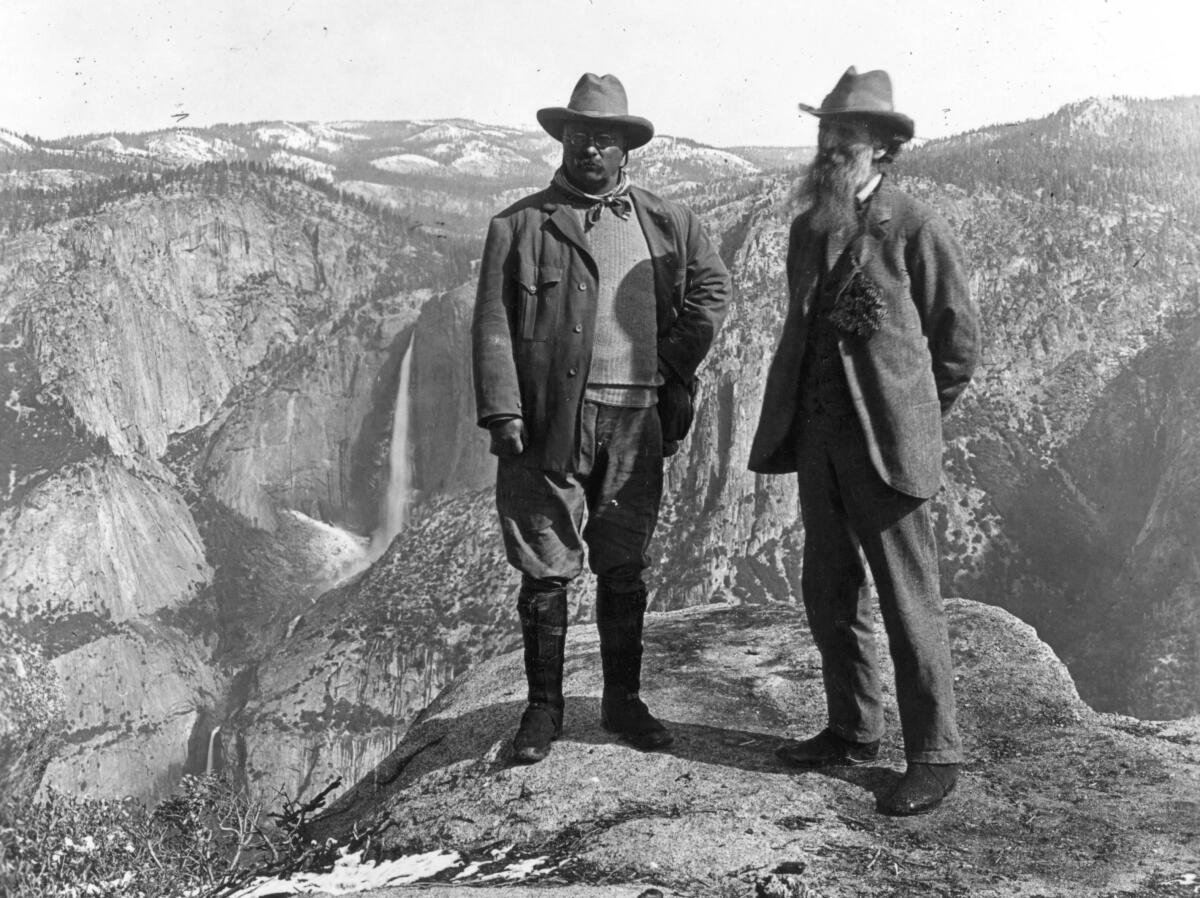
You may remember reading last year in The Times about the Sierra Club grappling with the legacy of its founder John Muir, who helped create the national park system but also made racist statements about Black and Indigenous people. That piece was sparked in part by a blog post from the influential environmental group’s executive director, Michael Brune, who wrote, “It’s time to take down some of our own monuments, starting with some truth-telling about the Sierra Club’s early history.”
On Friday evening, Brune abruptly announced his resignation after 11 years at the helm, writing that he and the board of directors “bear the ultimate responsibility for ensuring that our staff and volunteers feel safe, supported and valued, and I sincerely apologize for any instance in which this was not the case.”
It wasn’t immediately clear what that meant, but a few days later Politico’s Zack Colman provided some context. He reported that a sizable contingent of Sierra Club leaders disagreed with Brune’s assessment of Muir. This included the organization’s first Black president and first Black board member, who tried to get Sierra Magazine to print a dissenting viewpoint but were blocked.
We’ll be back in your inbox next week. If you enjoyed this newsletter, please consider forwarding it to your friends and colleagues.




